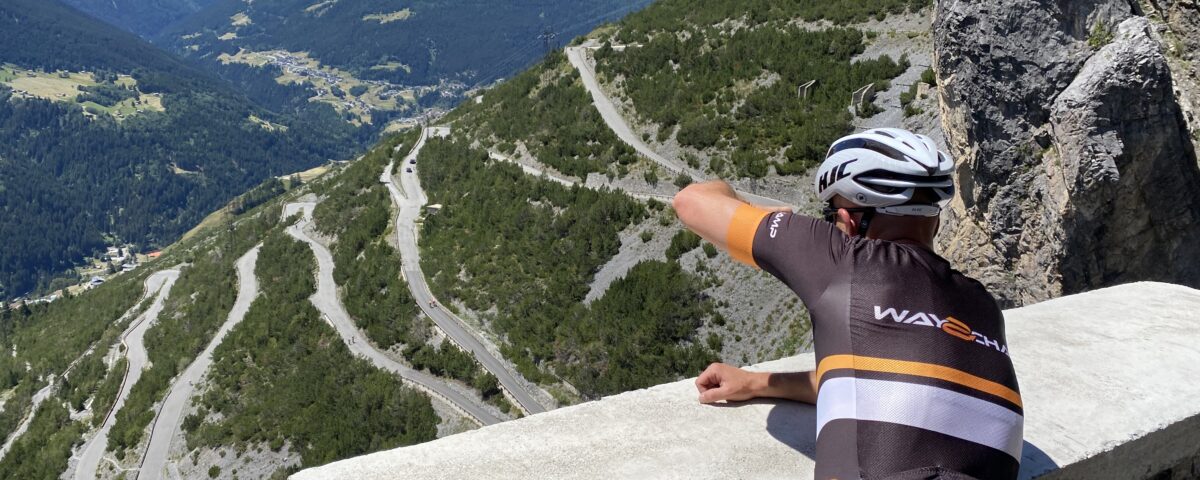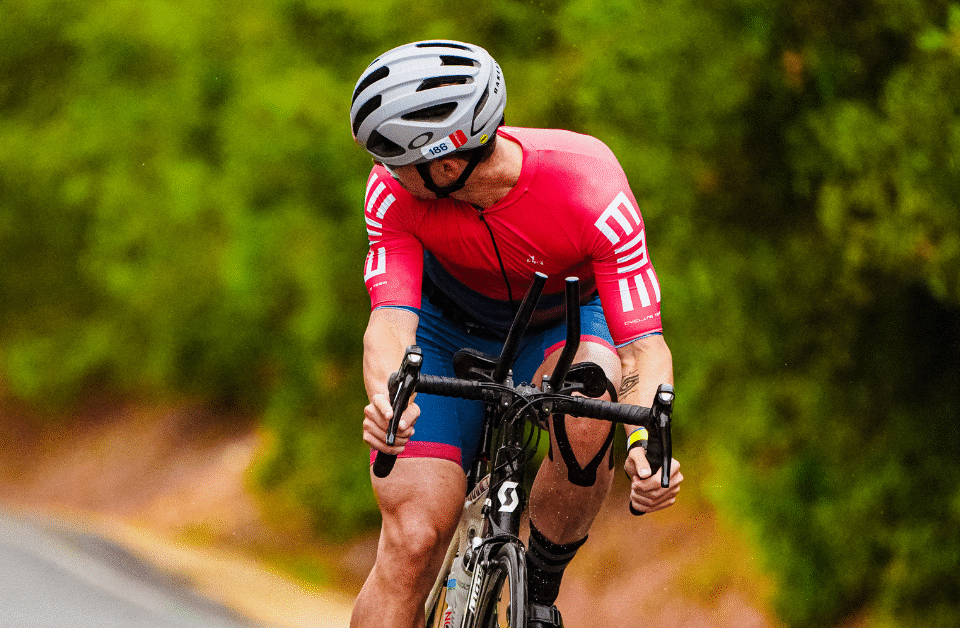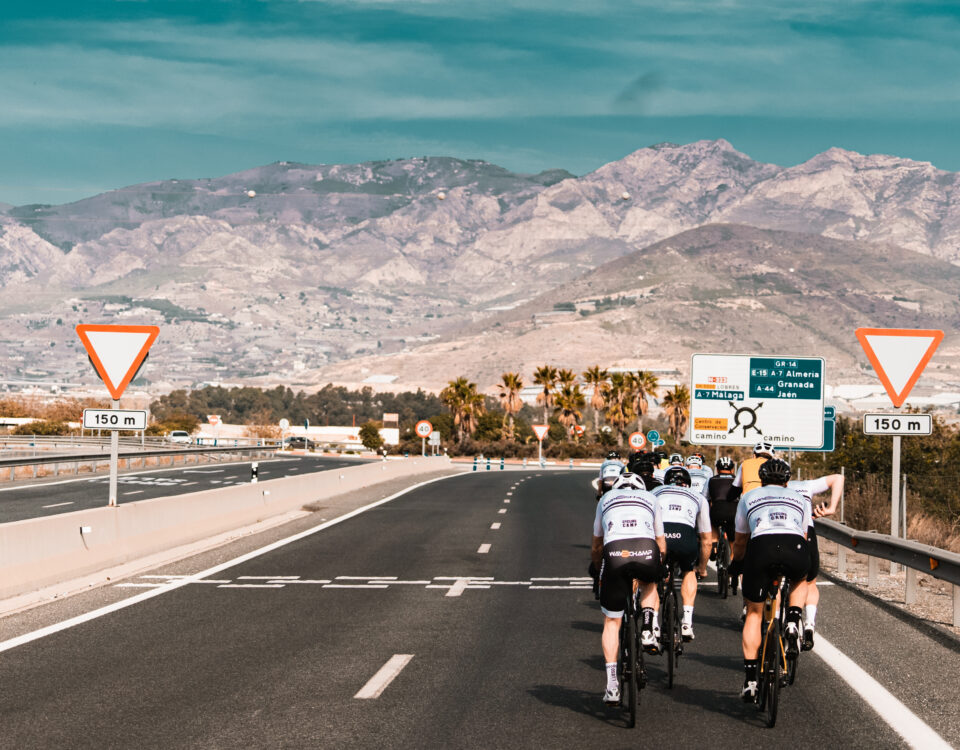
The Guilt-Free Guide to Business Growth After 40
8 July 2025
The 5 Energy Drains Every Entrepreneur Over 40 Must Eliminate
8 July 2025
Your cycling dreams don’t have to wait for the “perfect” business moment—here’s how to honor both your entrepreneurial ambitions and your century goals with a plan that actually works.
I remember the exact moment when everything clicked for me.
I was standing in my garage, looking at my bike covered in a thin layer of dust, holding the registration confirmation for a century ride that was just 12 weeks away. That same morning, I’d gotten the call—the biggest business opportunity of my career had just landed on my desk, and it needed my complete attention for the next three months.
My first instinct was the same one you probably have right now: “I guess the century will have to wait until next year.”
But something stopped me. Maybe it was remembering how alive I felt on those long Saturday rides, or how much clearer my thinking became after a good training session. Or maybe I was just tired of always putting my cycling dreams on the back burner whenever business got intense.
What if—just what if—I could do both?
That decision changed everything. Not only did I complete that century ride (and absolutely loved every mile), but I also closed the biggest deal of my career. More importantly, I discovered that training for the century actually made me better at business, not worse.
If you’re facing a similar crossroads right now, I want you to know something: your cycling goals aren’t selfish, and they’re not a distraction from your business success. They’re actually your secret weapon.
Why Your Bike is Your Best Business Partner
Before we dive into the training plan, let’s talk about something that might surprise you: the same qualities that make you a successful entrepreneur are exactly what you need to complete a century ride.
Think about it. The mental toughness to push through mile 80 when your legs are screaming? That’s the same resilience that gets you through tough negotiations. The ability to pace yourself over 100 miles? That’s identical to the strategic thinking required for long-term business planning.
But here’s the beautiful part—training for your century doesn’t just complement your business skills, it amplifies them.
Every morning you clip in for a training ride, you’re practicing discipline. Every interval session teaches you to stay calm under pressure. Every long ride builds the mental endurance that serves you in marathon client sessions. And perhaps most importantly, every moment you spend on your bike is giving your mind the space it needs to process complex business challenges.
I’ve watched this transformation happen with dozens of entrepreneurs. They start thinking their cycling training is “time away from work,” and they end up discovering it’s actually “time invested in becoming a better business leader.”
The 90-Day Integration Method: Your Roadmap to Success
Here’s what I’ve learned from helping entrepreneurs just like you tackle both goals simultaneously: success isn’t about finding more hours in the day. It’s about making every hour work harder for both your business and your cycling goals.
I call this the Integration Method, and it’s built around a simple truth: your best business ideas often come when you’re not trying to think about business at all.
Phase 1: Building Your Foundation (Weeks 1-4)
Your Business Reality: These first few weeks are all about information gathering, relationship building, and setting up the frameworks that will carry your deal forward.
Your Cycling Goal: Establish a consistent training routine that actually enhances your business performance rather than competing with it.
Here’s the thing about base training—it’s not about going fast or pushing hard. It’s about showing up consistently and building the aerobic foundation that everything else depends on. The same principle applies to your business foundation.
The Morning Advantage Sessions:
I want you to start thinking of your morning rides as your competitive advantage. While your competitors are hitting snooze and checking emails from bed, you’ll be building physical and mental strength that carries you through the entire day.
Monday – The Week Planner (60 minutes): Start your week with a 60-minute endurance ride at a conversational pace. This isn’t about burning matches—it’s about building your aerobic base while giving your mind space to process the week ahead. I often find my best strategic insights come around mile 45 of these rides, when my mind has settled and the creative solutions start flowing.
Tuesday – The Relationship Builder (45 minutes): A shorter, easy-paced ride that leaves you energized for the day’s relationship-building activities. Use the post-ride endorphin boost for your most important client calls—you’ll be surprised how much more charismatic and creative you are after some time on the bike.
Wednesday – The Problem Solver (60 minutes with tempo intervals): This is where we add some structured intensity. Three 10-minute tempo efforts (where you can still talk but in shorter sentences) with 5-minute recoveries between. The focused effort followed by recovery mimics the business cycle of intense work followed by strategic thinking time.
Thursday – The Maintenance Day (45 minutes easy): Think of this as your recovery ride—keeping the legs spinning while your mind processes yesterday’s progress. Perfect for planning relationship-building activities and handling the administrative side of your deal.
Friday – The Week Finisher (60 minutes endurance): End your week strong with another endurance ride. Use this time to review the week’s progress and set intentions for the weekend. You’ll be amazed how much mental clarity comes from this weekly review process.
Weekend Long Ride (2-3 hours): This is your weekly highlight—a longer ride that builds endurance while giving you extended time away from the business noise. I recommend choosing routes that take you away from cell service for at least part of the ride. Some of my clients’ biggest business breakthroughs have happened during these disconnected weekend rides.
Phase 2: Building Intensity (Weeks 5-8)
Your Business Reality: Things are getting serious now. Negotiations are heating up, proposals are being refined, and the pressure is building.
Your Cycling Goal: Match this business intensity with smart training intensity while using cycling as your stress management tool.
Here’s something counterintuitive: when business stress increases, your instinct might be to train harder to “burn off steam.” But that’s actually counterproductive. Your business is already providing one form of stress to your system. Smart training during this phase is about building power and endurance while providing stress relief, not adding more stress.
The Strategic Intensity Approach:
Tuesday/Thursday Power Sessions (60 minutes):
- 15-minute warm-up (perfect time for mental preparation for the day)
- 4 x 8-minute intervals at a “comfortably hard” effort—hard enough that conversation is difficult, but not so hard that you’re gasping
- 4-minute recovery between intervals (ideal for returning urgent texts or planning your next business move)
- 15-minute cool-down (transition into high-focus work mode)
The beauty of these intervals is they teach you to stay calm and make good decisions under physical stress—a skill that transfers directly to high-pressure business situations.
Weekend Long Rides (3-4 hours): These become your reset button. Plan routes that challenge you but don’t destroy you. Practice your fueling strategy, work on pacing, and most importantly, give your mind the space it needs to process the week’s business challenges.
One of my favorite pieces of advice: bring a small voice recorder or use your phone’s voice memo function. Some of your best business insights will come during these longer rides, and you’ll want to capture them.
Phase 3: Peak Integration (Weeks 9-12)
Your Business Reality: Crunch time. Final negotiations, last-minute details, and the intense focus needed to bring everything home.
Your Cycling Goal: Peak for your century while maintaining the energy and mental clarity needed for business success.
This final phase is all about confidence building and smart recovery. You’ve done the work—now it’s about arriving at both your century start line and your business finish line feeling prepared and excited, not exhausted and burned out.
The Confidence Protocol:
Weeks 9-10: Simulation Training
- Practice riding at your target century pace for 2-3 hours
- Test your fueling strategy during longer business meetings (seriously—the nutrition skills transfer directly)
- Use ride time for presentation rehearsal (great for vocal projection and mental rehearsal)
Week 11: Business Priority with Active Recovery
- Keep all rides to 90 minutes or less
- Focus on easy spinning and stress management
- Use brief rides as transition rituals between major business activities
Week 12: Taper and Execute
- Minimal riding—just enough to keep the legs fresh
- Pour your energy into closing your deal
- Plan your century for the weekend after deal completion as the ultimate celebration
The Energy Management System That Changes Everything
Here’s where most people get it wrong: they think energy is finite, and if you spend it on cycling, you won’t have enough for business. But energy isn’t like money—when you manage it strategically, you actually create more of it.
Morning Rides for Afternoon Clarity: Schedule your most complex business decisions for right after your morning rides. The increased blood flow, endorphin release, and mental clarity from exercise dramatically improve your decision-making ability. I’ve had clients tell me their post-ride business insights were worth more than the entire training program.
Interval Training for Negotiation Skills: Those structured interval sessions aren’t just building physical power—they’re building mental resilience. When you can stay calm and focused during a hard 8-minute effort, staying composed during a tense negotiation becomes much more manageable.
Recovery Rides for Relationship Building: Easy-paced rides are perfect for phone calls with key stakeholders. Your relaxed, positive state makes you more likeable and creative in conversations. Just make sure to choose safe routes and use hands-free technology.
Fueling for Dual Performance
Your nutrition strategy needs to support both your century training and your business performance. Here’s the approach that works:
Pre-Ride Fuel: Black coffee with a small amount of healthy fat (like MCT oil) gives you steady energy without a crash. If you’re riding over 90 minutes, add a small amount of easily digestible carbs.
Post-Ride Recovery: This is crucial for both your cycling adaptation and your business performance. A combination of protein and complex carbs within 30 minutes of finishing your ride supports muscle recovery while providing steady mental energy for the day ahead.
Business Day Nutrition: Maintain steady blood sugar with protein and healthy fats throughout the day. Avoid the energy rollercoaster of processed foods and excessive caffeine that can derail both your training adaptation and your business focus.
When Things Don’t Go According to Plan
Business rarely unfolds exactly as planned, and sometimes training gets disrupted. Here’s your emergency playbook:
If the deal timeline extends: Don’t panic. Maintain a minimum of three rides per week, even if they’re shortened. Consider postponing your century to a later date if needed, but keep training—the business benefits alone make it worthwhile.
If training time gets compressed: Focus on quality over quantity. Two well-executed interval sessions per week can maintain fitness surprisingly well. Prioritize sleep and recovery above all else.
If stress levels spike: This is when cycling becomes medicine, not training. Shift to easier, longer rides that provide stress relief and mental clarity. Remember: the goal is to feel better, not to add more stress to your system.
Your Success Celebration
When you cross that century finish line knowing you also closed your biggest business deal, you’ll have proven something powerful to yourself: you don’t have to choose between your entrepreneurial ambitions and your cycling dreams.
More than that, you’ll have developed a sustainable model for excellence that serves you for the rest of your life. You’ll know that your cycling isn’t a distraction from business success—it’s a foundation for it.
Your Next Pedal Stroke
I want you to stop for a moment and imagine this: It’s three months from now. You’re pinning on your number for the century ride you’ve been dreaming about, and your phone is buzzing with congratulations messages about the deal you just closed.
How does that feel?
That feeling is entirely within your reach. It starts with one simple decision: to stop seeing your cycling and business goals as competing priorities and start seeing them as complementary forces that make you stronger in both areas.
Your first step is simple: look at your calendar right now and block out time for your first training ride this week. Treat it like the important business meeting it actually is—a meeting with the person who’s going to achieve both your cycling and business goals.
The road ahead has climbs and descents, tailwinds and headwinds. But with the right approach, you’ll finish stronger than you started, both in business and on the bike.
Your century ride is waiting. Your biggest deal is within reach.
Time to prove to yourself that you can have both.
Ready to start your integrated training plan? Remember, every epic ride starts with just turning the pedals. Today is your day one.
Thinking about cycling training? If you want to take your riding to the next level, we have a great option for you:
- Individual coaching – work one-on-one with an experienced coach who will continuously adjust your training load to your needs and support your development as a cyclist.

